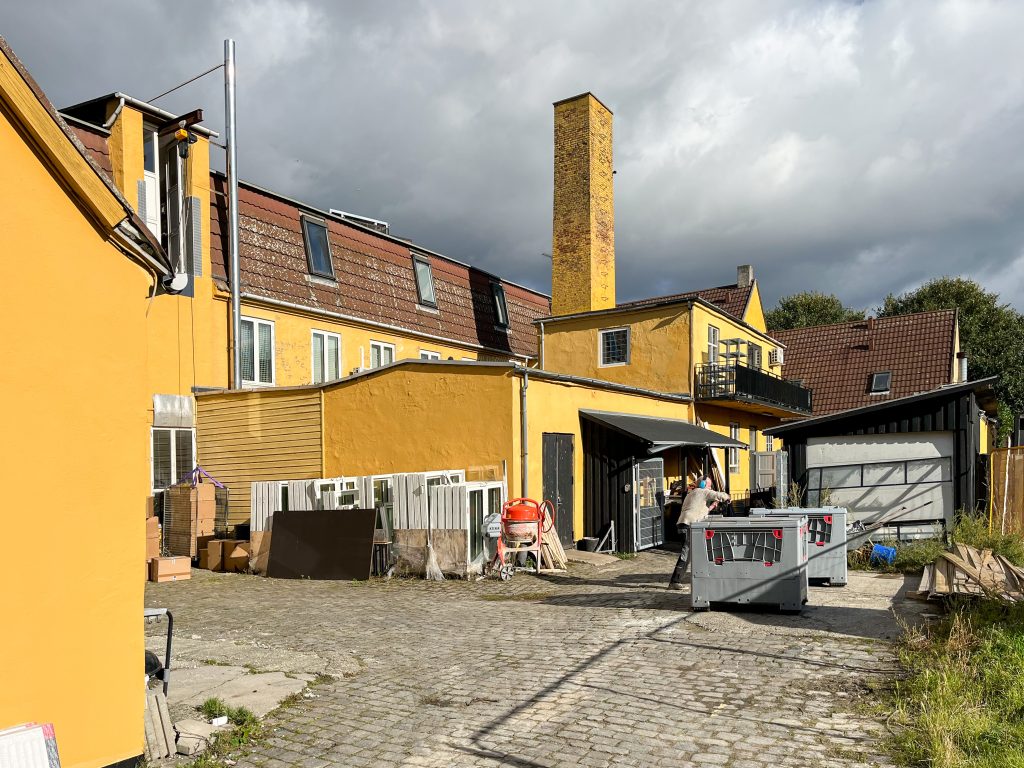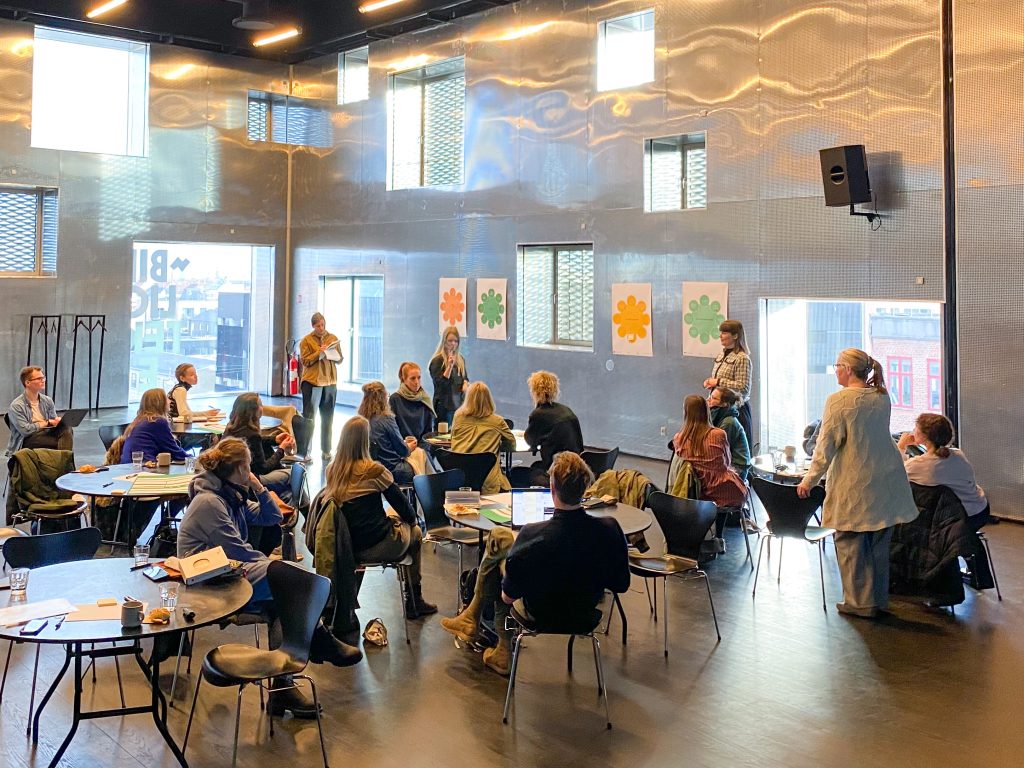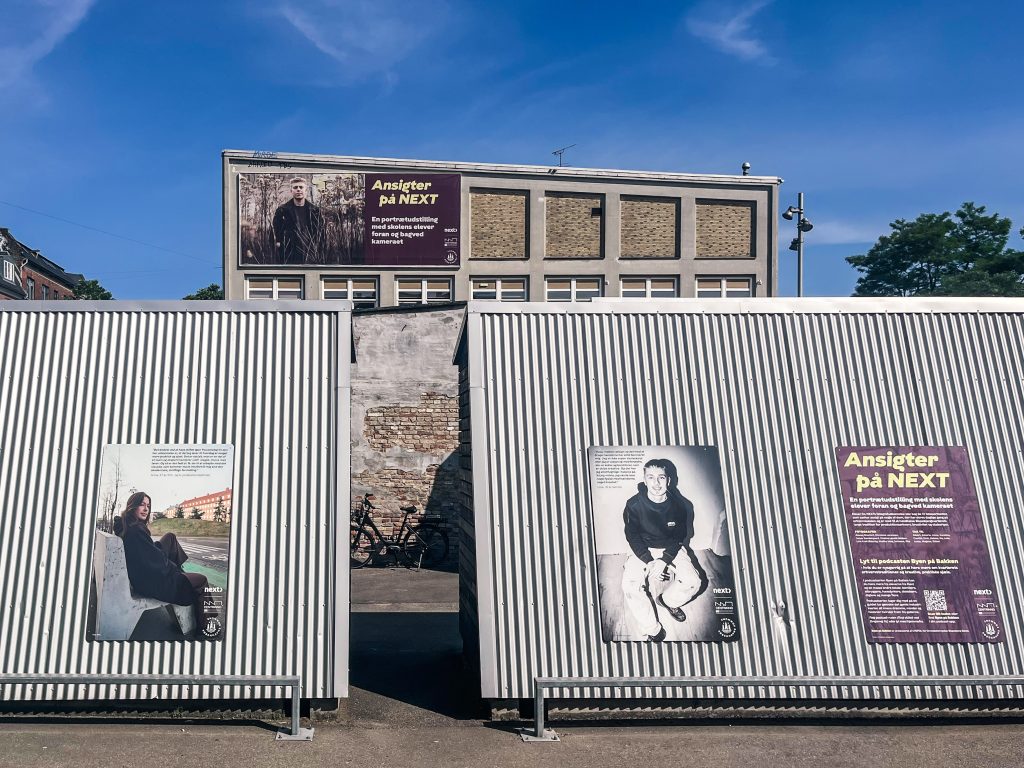BLOG
Empowering Communities and Fostering Inclusive Urban Development: The Copenhagen Pilot
Copenhagen is facing intense redevelopment pressure due to a yearly influx of around 10,000 new residents and escalating housing costs. As these challenges displace low-income groups and shutter small-scale production and craft-based businesses, the focus of the Copenhagen pilot has been to strengthen the ecosystem in the former industrial area of Copenhagen Northwest (NV).
This blog post attempts to give an overview of the main activities and results of the Copenhagen pilot as well as insight into the most important lessons learned.

Identifying challenges
In the context of the project’s scope, our pilot team initiated a process to refine our focus and direct our efforts. Through an analysis of the area including dialogues and interviews with local stakeholders, we pinpointed two primary challenges:
The area has numerous stakeholders and initiatives, yet there is a limited level of interaction among these actors and a lack of knowledge exchange regarding available resources.
Local creative and production businesses face difficulties in accessing affordable spaces due to the ongoing gentrification process in the area.
Considering these challenges and aligning with the five central concepts of CENTRINNO (Circularity, Heritage, Vocational Training, Social Inclusion, Fab City Hub), the Copenhagen pilot outlined three missions that would guide our experiments and activities during the three sprints of CENTRINNO:
- Enhancing Creative Workspace Availability
- Establishing a Distributed Hub
- Promoting Vocational Training
Enhancing Creative Workspace Availability
Initially, our objective was to create and test scalable business models that would facilitate access to affordable spaces suitable for creative and productive purposes, thus contributing to the vitality of the neighbourhood. We reached out to relevant developers in the pilot area, but unfortunately, none of them had any available space for testing new models. While there was a positive sentiment among various stakeholders regarding the idea of a diverse and creative neighbourhood, no concrete plans had been formulated to support this vision, and the tangible value it could bring had not been fully considered.
As a result, we had to pivot our focus. Our new goal was to gather information that would enable us to advocate for the importance of creative environments to various stakeholders, both in the public and private sectors. This effort led to the compilation of best practices, including local, national, and international examples, an analysis of creative and craft businesses in Copenhagen, and the development of a model for nurturing creative urban spaces.
Industrial heritage as physical structures for creative purposes
This body of knowledge underscored the significance of preserving industrial heritage whenever possible, as these physical structures often serve as fertile grounds for creative purposes. Furthermore, the analysis emphasized the desirability of supporting a variety of activities, both introverted and extroverted, to breathe life into an area and cultivate a vibrant atmosphere. This, in turn, can make a neighbourhood feel more welcoming and safer.
We have shared these findings with relevant stakeholders within the municipality, resulting in CENTRINNO making a significant footprint at the policy level. Small creative businesses are now included as a subject in the Municipal Plan Strategy, and a fund has been established to support creative businesses and urban environments.
Whenever the opportunity has arisen, we have also conveyed these results to private actors, with the hope that they will begin to consider their development projects in a more holistic manner. As private developers tend to focus on profit maximisation, it is important to show the value, that industrial heritage and creative businesses, and urban spaces add to a neighbourhood – something that we will continue to work on.
Establishing a Distributed Hub

The Copenhagen pilot project has been implementing a distributed hub model, which is structured as a network comprised of existing local creative entities and spaces. The primary objective is to support local initiatives and encourage the exchange of knowledge and opportunities among various stakeholders through networking events. It aims to provide a platform for stakeholders to collaborate and share resources while also establishing a unified local voice in relation to political discussions and the development of the area.
To initiate this project, we began by identifying local participants by consulting the central business register and by engaging with residents in the area. Our goal was not only to comprehend the existing dynamics in the community but also to generate interest among potential network participants and the local collaborations the network would enable.
Co-creating a shared platform
Through an open invitation, we invited all relevant individuals and organizations from the area to join a series of meetings. During these gatherings, we facilitated collaborative processes with the intention of mapping common interests and identifying potential joint initiatives. The participants themselves prioritized and developed these initiatives, marking the initial steps toward creating a shared platform. The platform’s consolidation received a significant boost when it secured external funding amounting to 400,000 Danish Kroner for the period of August 2023 to December 2024.

Throughout this process, the local makerspace, closely linked to the municipal youth club, played a central role. This dedicated entity possessed the necessary resources in terms of time and knowledge to successfully apply for and secure external funding for the network, thereby strengthening its existence.
The steering committee of the network, the core of this distributed hub, comprises individuals with diverse expertise, spanning from physical production to food processing and democracy development.
The network moving forward
As a first common event, the network members have opted to make a ‘Light festival’ (instead of the initial idea of a Christmas market) to ensure inclusivity and cater to residents of different religious beliefs. Additionally, an opportunity to develop the neighbourhood as a ‘mini tourist destination’ emerged externally when the tourist organization Wonderful Copenhagen reached out to the network.
The network represents a lot of different voices, but common to all of them is that they wish to protect that special ‘feeling’ of their neighbourhood by supporting each other as well as including the residents.
Promoting Vocational Training
We’ve engaged two local stakeholders to create vocational training programs supporting social inclusion, innovation, and production in the pilot area. They have had a close collaboration with local educational institutions, as well as a focus on reaching a broad audience of residents.
The makerspace, now also the network coordinator, has conducted a diverse range of workshops for various groups, including businesses, teachers, pedagogues, school pupils, and local citizens spanning all age groups. These workshops cover topics from foliage cutting to 3D-printing, upcycling materials, and repair cafés. The approach has piqued the interest of participating kids, empowered local schoolteachers with knowledge of ‘maker technologies,’ and facilitated community engagement through events like ‘neighbour Sundays,’ where residents receive assistance with their projects. This format has also proven popular among vulnerable individuals in the neighbourhood, offering them a sense of community.
The municipal Areal Renewal serves as the other project partner. They have organized two intensive project weeks. During these weeks, students from the local vocational school, NEXT, collaborate with 6th-grade students from Tagensbo, a local public school, to create physical installations. This cooperation not only instils pride in the NEXT students but also imparts valuable knowledge about vocational training and the local vocational school to the 6th-grade pupils – a school many of the pupils didn’t even know existed before participating in this project.
The most challenging part of completing this mission has been the relationship building, which takes time and resources, and the practical planning of the many sessions due to varying school agendas. However, the workshops and training sessions are considered successes by both partners. The makerspace has experienced an increased interest in their activities to such an extent that it is currently exploring various possibilities to make its facilities operational seven days a week.
Living archive x 3
The living archive has been a transversal activity adding further value to the different missions. We’ve established three distinct formats of a living archive:
- an exhibition at the local library telling the industrial story of the neighbourhood in both words and physical objects of the past and the present to create awareness of the special heritage of the area. Moreover, it invited the spectators to interact and create their own vision for a desirable future for the neighbourhood.
- A podwalk that chronicles the neighbourhood’s transformation from an old industrial area to a creative hub within the city. This initiative aims to provide residents with historical insights and a peek into current activities, fostering a sense of awareness and pride in their community’s evolution.
- The third living archive format comprises a photo exhibition by NEXT students, presenting portraits accompanied by quotes reflecting their thoughts and aspirations regarding vocational training. These large posters are strategically displayed on the fences and walls of NEXT, offering an external perspective on the ongoing activities and potentially inspiring current students.

Emotion networking
Decision-making related to city renewal and urban development is often affected by conflict. Thus, the municipality continuously tries to identify how best to involve local actors and perspectives throughout the decision-making process. The municipal department working with local zoning plans pointed out a lack of tools to systematically involve local citizens in developing zoning plans and general work on urban development. Having identified the demand for new tools, we saw a potential for the emotion networking method to initiate a democratic dialogue about urban development.
We have experimented with emotion networking to test how the method can initiate new dialogues among different neighbourhood actors and support a democratic process toward developing future zoning plans in the city. The method showed very valuable, and we have used it as a tool to facilitate a democratic dialogue between citizens about how to develop local neighbourhoods and about preservation of cultural heritage. Based on our tests and learnings, we have formalized a process and set of tools for the local committees to use in future involvement processes across Copenhagen.
How to support the creative eco-system
Based on our learnings in CENTRINNO, the City of Copenhagen has made a number of recommendations on how to support and develop creative, urban environments – recommendations that can be used in other cities as well:
Local network and vision
It is crucial to ensure local ownership; it is the local actors who must own the network and make their own vision for their neighbourhood. Networks seldomly emerge on their own, why the municipality should help facilitate this process:
- Identify key stakeholders and existing hubs in the area and invite them to join the process as early as possible. Include local councils as they often possess valuable knowledge about local actors and resources.
- Identify local strengths and existing narratives and let the stakeholders formulate their own vision for their neighbourhood.
- Facilitate the establishing process of a network for these local actors.
A vibrant neighbourhood
A lively, authentic, and welcoming atmosphere can be supported by the municipality through the facilitation of cooperation, by easy access to permissions, or via financial assistance to one or more of the following propositions:
- Promote communal cultural events in the area that not only shape the local identity but also encourage meaningful dialogue.
- Turn activities, workshops, and similar initiatives inside out, so they are easily noticeable by both residents and visitors—allocate space in both public and semi-public areas.
- Make room for inviting restaurant(s) as a focal point for street life.
- Entrust the responsibility for developing and overseeing these initiatives to local partners – the local network.
Affordable and suitable square meters
The overall challenge for the creative and crafts businesses of Copenhagen is the lack of suitable commercial leases, both in terms of price but also with regard to the nature of the physical framework. Based on mapping, analysis, and dialogue with a wide range of stakeholders, the city of Copenhagen can explore the following opportunities:
- Identify constraints and leverage opportunities to support commercial and semi-commercial entities in municipal leases, such as cultural centres.
- Engage in dialogue with external stakeholders regarding alternative funding options for suitable square meters, involving foundations, associations, and others.
- Increase privately funded square meters by presenting the business case; the value of creative urban environments, potentially boosting private investment in the area.
- Provide appropriate frameworks in the planning area:
-Preserve commercial square meters (workshops/warehouses, etc.). in upcoming municipal plans and local plans, particularly spaces suitable for culture, craftsmanship, and production.
-Continue the concept of ‘Creative Zones’ including a building percentage of 60 and usage restrictions.
-Articulate industrial cultural heritage as an asset and explore the possibility of preservative local plans.
Contact: Ida Maj Emborg, City of Copenhagen, [email protected]































































































